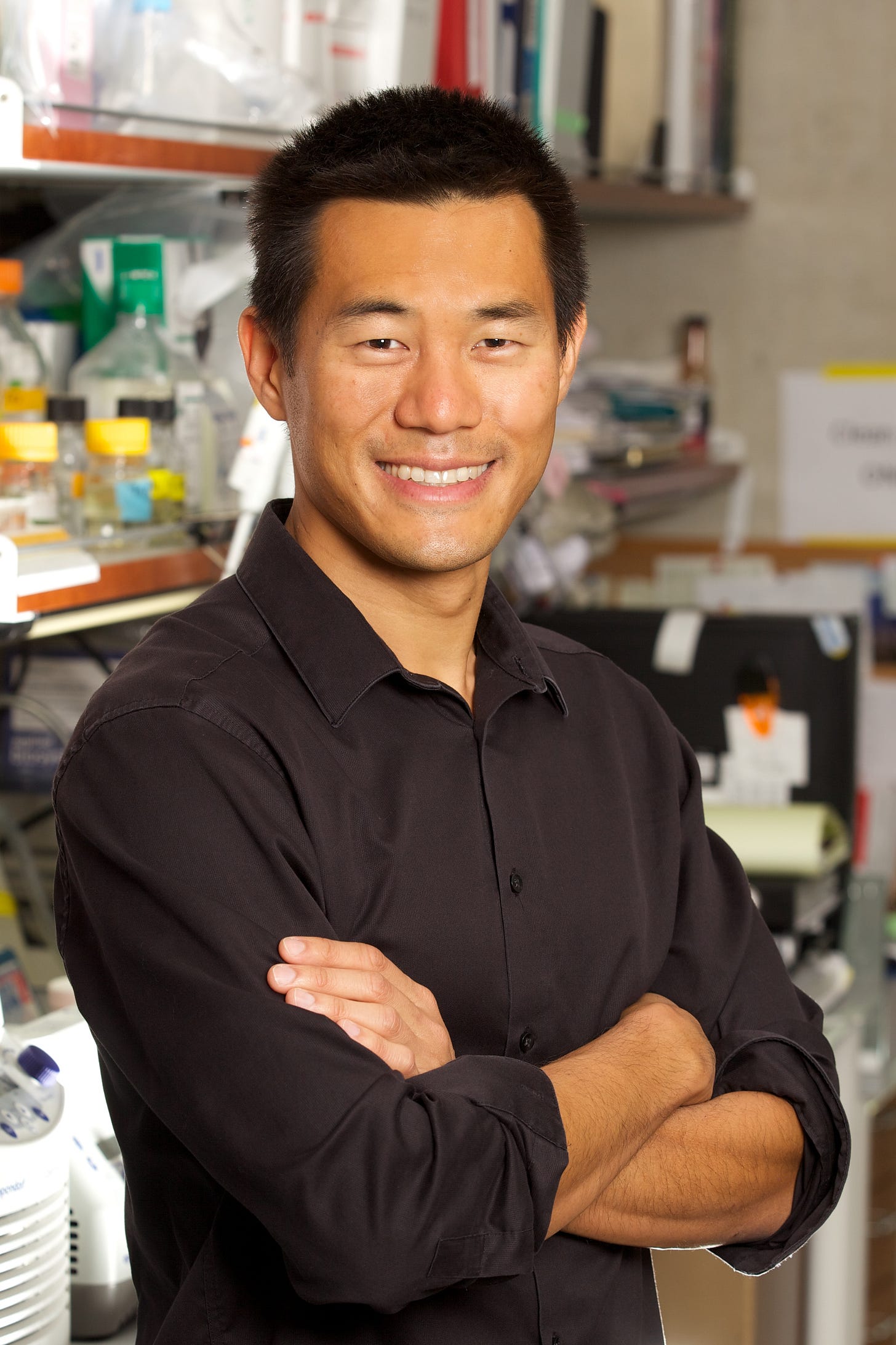Axial: https://linktr.ee/axialxyz
Axial partners with great founders and inventors. We invest in early-stage life sciences companies such as Appia Bio, Seranova Bio, Delix Therapeutics, Simcha Therapeutics, among others often when they are no more than an idea. We are fanatical about helping the rare inventor who is compelled to build their own enduring business. If you or someone you know has a great idea or company in life sciences, Axial would be excited to get to know you and possibly invest in your vision and company. We are excited to be in business with you — email us at info@axialvc.com
Gene Yeo is a leading researcher in the field of RNA biology and RNA binding proteins (RBPs). As a Professor at the University of California San Diego, he runs a highly productive and innovative lab focused on unraveling the molecular mechanisms by which RBPs regulate gene expression. His work spans several critical areas including stem cell biology, neuroscience, virology, and bioengineering. Over his career, Dr. Yeo has made groundbreaking contributions advancing the understanding of post-transcriptional control of gene expression and how defects in RBPs underlie human disease.
A major research focus of the Yeo lab is to elucidate how RBPs control RNA processing to maintain proper cell function during development and disease. RBPs carry out crucial roles regulating RNA splicing, stability, localization and translation. However, there has been limited understanding of the specific RNA targets bound by RBPs and the precise mechanisms of regulation. The Yeo lab has pioneered cutting-edge experimental and computational approaches to map RBP binding sites transcriptome-wide and relate binding to effects on RNA processing.
Several themes define the innovative research in the Yeo lab:
1. Mapping protein-RNA interactions globally
A signature of the Yeo lab has been the development and application of crosslinking immunoprecipitation (CLIP) technologies to generate high-resolution maps of RBP binding sites across transcriptomes. The lab optimized CLIP methods to enable robust, reproducible and large-scale mapping of hundreds of RBPs in human cells. This work has yielded the most comprehensive atlases to date of protein-RNA interactions and provided an invaluable resource for the field.
2. Integrating binding with functional genomics
A key strength of the Yeo lab is the integration of global binding maps with functional genomics data measuring effects of RBP depletion on RNA processing. This combination has allowed the lab to derive fundamental principles connecting where RBPs bind to how they control splicing, stability and other aspects of RNA metabolism.
3. Capturing RNA processing at the single cell level
Recent work in the Yeo lab has focused on new techniques to assess RNA processing in single cells. This is providing unique insights into cell-to-cell variability in transcriptomes and how gene regulation diverges across cell populations.
4. Therapeutic targeting of RNA
The Yeo lab has translated findings in basic RNA biology towards potential therapeutic applications. For instance, the lab demonstrated use of CRISPR/Cas systems for programmable targeting of RNAs as a promising approach to treat genetic diseases. This pioneering work helped launch companies to further develop RNA-targeted therapeutics.
The Yeo lab’s prolific research has advanced understanding of RBP function in diverse biological contexts:
- Elucidated roles of RBPs like RBFOX2, LIN28 and IMP1/2/3 in regulating splicing, stability and translation to maintain pluripotency of human embryonic stem cells.
- Discovered functions of RBFOX1/2/3 in regulating alternative splicing of neuronal genes implicated in autism spectrum disorders and other neuronal diseases.
- Mapped binding sites of RBPs like TDP-43 and FUS across neuronal transcriptomes and found common loss-of-function mechanisms in neurodegeneration.
- Developed computational tools to accurately predict A-to-I editing across transcriptomes and showed unexpected roles for ADAR enzymes.
- Revealed coordinated functions amongst RBPs in regulating shared RNA targets and complex interconnectivity amongst RBP regulatory networks.
- Pioneered methods to assess variability in RNA processing across single cells, uncovering new dimensions of post-transcriptional regulation.
This body of work has provided fundamental mechanistic insights into RBP function in homeostasis and disease while spearheading technical innovations that transformed the landscape of the field. In addition to his groundbreaking research, Dr. Yeo has exhibited remarkable leadership to advance RNA biology and bioengineering. His lab served as a major force in the NIH ENCODE project generating foundational data on protein-RNA interactions in human cells. He has co-founded multiple biotech companies translating academic discoveries towards new RNA-targeted therapeutics. Organized rapid research responses to the COVID-19 pandemic in San Diego, leading efforts in epidemiology, virology and vaccine development. And launched outreach programs at UCSD focused on promoting diversity and inclusion in science.
Dr. Yeo has also made broad impacts through service on numerous editorial boards and strategic initiatives like the Human Cell Atlas. Altogether, his scientific vision, creative drive and supportive mentoring have nurtured an outstanding team of trainees who themselves have become leading voices in academia and industry.
The illuminating research from Dr. Yeo’s lab and his tireless dedication to advancing RNA biology have set new standards of innovation in the field. His pioneering work deciphering mechanisms of post-transcriptional regulation has opened promising new avenues for understanding human disease and developing RNA-targeted therapeutics. Under his guidance, many trainees and collaborators have been inspired to continually explore new frontiers in RNA biology. For these multifaceted contributions, Dr. Gene Yeo has emerged as a world-leading scientist, entrepreneur and mentor in his generation of RNA researchers. His sustained creativity and leadership will have lasting impacts on the future directions of the field.




